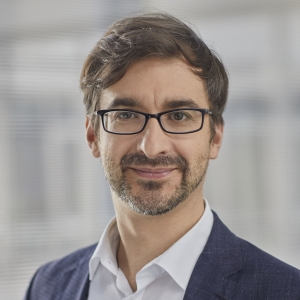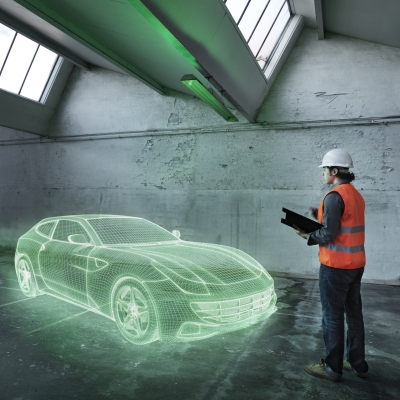Moving Smart Metering Data into the Cloud

Moving Smart Metering Data into the Cloud
Empowering utilities for a sustainable future
Leading solutions for end-to-end meter data management and cloud migration
Siemens Advanta's end-to-end, digital transformation services and solutions for utilities come with in-depth expertise in Meter Data Management implementation, customization, and seamless integration. These capabilities, paired with Azure certified cloud migration proficiency, made us the partner of choice for UK Power Networks' (UKPN) project to move its metering data into the cloud and to achieve operational excellence in digitalization - at scale.
See some of the capabilities we offer:
End-to-end solutions at scale: From conceptualization to implementation and ongoing support, we guide you through the entire journey of digital transformation.
Cloud migration expertise: Certified Azure partner ensuring a smooth transition of complex systems to the cloud.
Operational competence: Our teams provide continuous support and maintenance post-implementation, ensuring your systems operate at peak efficiency.
We are delighted with the seamless migration to Microsoft Azure. Moving to the cloud is also a key step towards enabling the country’s Net Zero transition. By building capacity to manage the increasing data from smart meters, we are ready for the growth of smart meters and low carbon technologies including electric vehicles and heat pumps.

Read full Press Release
Read the press release our client UKPN published on their successful MDM cloud migration project, with Siemens Advanta providing design, delivery and ongoing maintenance support services within this project.
Our industry leader

Factory Decarbonization

Factory Decarbonization
Decarbonization & energy efficiency in factories
Siemens Advanta supports its industry clients to leverage sustainability of their factories and factory networks. Our holistic approach enables the journey towards lean, digitalized and energy-efficient factories & production processes by leveraging the entire Siemens sustainability ecosystem covering comprehensive services, scalable (digital) software & solutions and potential hardware applications with a strong implementation focus.
This includes identifying, analyzing, and evaluating energy & carbon emission-related drivers within a factory and its infrastructure, which will create valuable insights for the factory decarbonization journey to reduce energy use, cost, and carbon emissions. Our tailored services and solutions include target setting, data collection, energy assessment, scenario simulation, measure development & roadmap as well as implementation and roll-out.
- Consulting & Integration
- Data Collection & Energy Assessment
- Scenario Simulation
- Optimization Measure Development
- Roadmapping
- Energy use reduction potential
- Energy cost saving potential
- Carbon emission reduction potential
- Optimization measures in roadmap
-
Lean, digitalized and energy-
efficient factory & production processes
Our industry leader

Green Hospital

Green Hospital
Building the future: Sustainable hospitals leading the way
In an era where health meets environmental consciousness, sustainability is getting more and more important. A study revealed that the CO2 emissions from healthcare in the world’s largest economies account for about 5% of their national carbon footprints, this is a larger share than either aviation or shipping.
Hospitals constitute a substantial portion of emissions within the healthcare industry. 64 % of energy consumption of all healthcare facilities is from large hospitals. To illustrate this further - one hospital bed in Germany requires more than twice the energy as an average household generating 64.4 tCO2e vs. 16.4 tCO2e, respectively. (Sources: MDPI; Universitätsklinikum Freiburg; Universitätsklinikum Freiburg; Our World in Data; Statista)
The primary contributors to greenhouse gas emissions within hospitals' operations are predominantly situated within their supply chains, necessitating targeted efforts for successful hospital decarbonization. According to the United Kingdom's National Health Service (NHS), a significant portion of the carbon footprint, accounting for 62%, is attributed to the supply chain, while only 24% of the hospital's carbon footprint falls under their direct control. (Source: The lancet)
Sustainable hospitals demand innovative solutions to embrace eco-friendly practices, reduce waste, cut energy bills, and improve patient care. For instance, sustainable hospitals can achieve energy savings through efficient lighting, HVAC systems, and renewable energy sources. Additionally, sustainable hospitals often report higher patient satisfaction rates.
What's more, legislative support, driven by both sustainability and cost advantages, is propelling the demand for sustainable hospitals. The NHS in the UK, for instance, is pioneering an ambitious plan to become the world's first Net Zero National Health Service by 2045, aiming for an 80% reduction by 2039, and has earned recognition from the WHO as a leader in sustainable healthcare. Meanwhile, the U.S. Health Sector Climate Pledge is actively promoting the transition to sustainable hospitals, targeting a 50% reduction in GHG emissions by 2030 and net-zero hospitals by 2050, with 1,080 hospitals (15% of U.S. hospitals) already committed. This legislative pressure urges swift, cost-effective sustainable hospital initiatives to cut emissions. (Source: NHS England; HHS)
of the national carbon footprints in the world's largest economies are attributed to CO2 emissions from healthcare.
Source: Universitätsklinikum Freiburg
the primary contributors to greenhouse gas emissions in hospital operations are predominantly situated within their supply chains.
Source: United Kingdom's National Health Service (NHS)
of energy consumption of all healthcare facilities is from large hospitals.
Source: Universitätsklinikum Freiburg
more energy needed for one hospital bed in Germany compared to an average household's bed.
Source: Our World in Data
Sustainable hospitals demand innovative solutions to embrace eco-friendly practices.
Siemens has previously implemented substantial solutions to enhance sustainability in the healthcare sector:
- One success story by Siemens is exemplified by the recent Pfizer facility in Germany achieving a 40% increase in energy efficiency through the integration of Siemens technology and services. (Pfizer).
- Siemens further enhanced energy efficiency at Taiwan's Development Center for Biotechnology (DCB) by introducing advanced controls for chilled water pumps and cooling water pumps, resulting in an impressive energy savings rate of 21.7%. (Taiwan Biotechnology Development Center).
- Another notable success story occurred at the Reutte Hospital in Austria, where Siemens transformed Reutte into a sustainable hospital by renovating the heating system and using a photovoltaic system on the roof with target energy savings of more than €150,000 per year (Reutte).
Our 3-step process for the "Green Hospital of the Future" initiative
Phase 1: Assessment - This phase involves diagnosing the patient's needs and requirements.
Phase 2: Conceptualization - Here, we create a comprehensive treatment plan based on the assessment.
Phase 3: Program Implementation - In this final phase, we execute the treatment plan and continuously monitor the patient's progress.
Industry experts



Cost Transformation

Cost Transformation
Data-led accelerated cost transformation, achieving measurable and sustainable cost reductions.
Vendigital as part of the Siemens Advanta organization, drives accelerated cost transformation through data.
We deliver benefits to our clients’ bottom line by transforming their cost base, at pace. Our operational experts work with our data scientists to convert unstructured operational data into actionable, operational intelligence to identify and implement specific cost saving opportunities.
We don’t just advise on what needs to be done, we work with our clients to execute the plan and generate cost benefits for their organization. Our consultants are operational specialists, with extensive experience of working within the sectors we serve – this ensures we have a deep understanding of clients’ challenges and how to achieve their cost transformation goals.
Whether our clients are looking to make longer-term strategic cost decisions or drive more immediate operational efficiencies, we work as part of their team to deliver quantifiable results – and, importantly, upskill in-house teams so that efficiencies can be achieved on an ongoing basis.
Explore our tailored portfolio to support your business needs

Latest Cost Transformation insights
Our industry leaders



Circularity Vehicle Passport

Circularity Vehicle Passport
The automotive industry at the forefront of circularity – a digital transformation
Digital product passports are a core element in the circular economy strategy of the European Union Green Deal.
In the upcoming years, we will see an increasing number of products to be accompanied with digital collections of their individual specifications and characteristics. With this, the EU aims to improve transparency for consumer decisions and all players along the value chain, to promote sustainable products and enable new circular business models.
The greater context – EU Green Deal & the automotive industry
On the path to fight climate change, circularity becomes increasingly prominent within the European Union and its member states. In fact, the European Green Deal declared circularity as one of the main pillars to drive sustainability. This implies that Europe’s major industries need to strive for increasing circular practices within their operations. The automotive industry is set to be one of the key areas for action, claiming the highest resource consumption within the EU as well as relying on an extensive value chain, impacting many other industries. Vehicle production is responsible for 19% of the steel consumption within the EU as well as for 10% of plastics used. Hence, legislators are evaluating measures to drive circular developments within the automotive industry in the context of the European Green Deal. (6)

Siemens Battery Passport
Our colleagues from Siemens are actively developing a Battery Passport ecosystem that goes beyond regulations. It empowers stakeholders to access and manage battery value chain data, using customizable add-on applications for analytics, sustainability, and more. This ecosystem is designed for universal accessibility and seamless integration with existing platforms, ensuring a user-friendly experience along the value chain. Join us in transforming the battery industry.
Several digital product passport approaches are expected to be relevant for the automotive industry. The nearest and most prominent example is the Battery Passport, based on the renewed EU Battery Regulation. It affects all electric vehicles with a high-voltage battery of 2 kWh capacity, sold in the European Union from 2027 onwards.
With a similar timeframe, the Environmental Vehicle Passport is expected, which as measure of the new EU Regulation on Type-Approval of Motor Vehicles (known as Euro 7), will redefine the scope of emission and approval data that carmakers must provide to customers.
Even more important is the Circularity Vehicle Passport, expected for 2032.
The proposal for a regulation on automotive circularity requirements
The Circular Vehicle Passport represents a groundbreaking approach to sustainability, revolutionizing the way we perceive and manage the lifecycle of vehicles. As the automotive industry embraces circular economy principles, the Circularity Vehicle Passport emerges as a pivotal document, enabling the efficient reuse, recycling, and repurposing of vehicles, thereby reducing waste, and minimizing environmental impact. (5)
The proposal by the European Union regarding the regulation on management of end-of-life vehicles, which is currently under evaluation, aims on driving circularity within the automotive industry. It focuses on six key action fields (4):
Design Circular
Improve the rules on how cars must be designed to be easily dismantled for later remanufacturing or material recycling.
Used recycled content
25% of the plastic used to build a new vehicle should be secondary material.
Collect more and smarter
Reduce the number of end-of-life vehicles gone missing, enforce rules for monitoring and increase transparency.
Treat better
Recover more and better-quality raw materials by improving recycling processes and promoting reuse strategies.
Make producers responsible
Stricter governance, improved cooperation, increased circularity.
Cover more vehicles
Gradually extend the scope of the rules, e.g. to commercial vehicles and road bikes (1).
By 2035, the regulation should lead to:
The Circularity Vehicle Passport as the digital enabler
To enforce the regulation and to reach the targets, a Circularity Vehicle Passport is stated as the digital enabler. It serves as a comprehensive, digital record that provides detailed information about a product's design, manufacturing, materials, and environmental impact, facilitating transparency, traceability, and sustainable practices throughout its lifecycle. Following more prominent solutions such as the Battery Passport or the Circularity Vehicle Passport may include:
- Material data, such as the composition of the vehicle, the weight of the materials used and their origin.
- Dismantling information, such as disassembly instructions, and recycling recommendations. (3)
Our take on the Circularity Vehicle Passport
The current regulation is still in its infancy and has not passed the proposal stage yet. Until now, there has been no official timeline set for the implementation of the regulation, neither have detailed information on the contents of the Circularity Vehicle Passport been defined. However, at Siemens Advanta Consulting, we believe that this or similar regulations will certainly become reality in the near future, following the landmarks of the European Green Deal. For the Circularity Vehicle Pass, we expect the corresponding regulation to enter into force in the beginning of the next decade. Therefore, we recommend automotive OEMs to engage in thought leadership and drive the development of an infrastructure which can enable digital product passports. Pioneers will further have the chance to push own standards in the market and actively collaborate on the development of industry standards. We also believe that those who go ahead now, can leverage considerable synergies from existing or planned digital product passports, such as the Battery Passport. Ultimately, just like the latter mentioned, the Circularity Vehicle Passport may also enable internal use cases for manufacturers to save costs, improve quality, or facilitate new business models and customer features.
With deep expertise in supporting external clients in the setup of already existing product passports, Siemens Advanta Consulting is your expert in the fast paced and constantly changing world of digital product passports. We are happy to guide you on your way towards a more sustainable future by using such digital tools, from the initial exploration of a fitting solution for you until the integration of the solution. We look forward to helping you close the loop and stepping into a bright circular future.
Our industry leader

- European Commission - Press release; Circular economy: improving design and end-of-life management of cars for more resource-efficient automotive sector; Brussels, 13 July 2023
- End-of-life vehicles Regulation (europa.eu)
- Proposal for a REGULATION OF THE EUROPEAN PARLIAMENT AND OF THE COUNCIL on circularity requirements for vehicle design and on management of end-of-life vehicles, amending Regulations (EU) 2018/858 and 2019/1020 and repealing Directives 2000/53/EC and 2005/64/EC; (Text with EEA relevance) {SEC(2023) 292 final} - {SWD(2023) 255 final} - {SWD(2023) 256 final} - {SWD(2023) 257 final}; Brussels, 13.07.2023
- COMMISSION STAFF WORKING DOCUMENT; Subsidiarity Grid; Accompanying the document
Proposal for a REGULATION OF THE EUROPEAN PARLIAMENT AND OF THE COUNCIL on circularity requirements for vehicle design and on management of end-of-life vehicles, amending Regulations (EU) 2018/858 and 2019/1020, repealing Directives 2000/53/EC and 2005/64/EC; {COM(2023) 451 final} - {SEC(2023) 292 final} - {SWD(2023) 256 final} - {SWD(2023) 257 final}; Brussels, 13.07.2023 - COMMISSION STAFF WORKING DOCUMENT; IMPACT ASSESSMENT REPORT; Accompanying the document Proposal for a Regulation of the European Parliament and of the Council on circularity requirements for vehicle design and on management of end-of-life vehicles, amending Regulations (EU) 2018/858 and 2019/1020 and repealing Directives 2000/53/EC and 2005/64/EC; {COM(2023) 451 final} - {SEC(2023) 292 final} - {SWD(2023) 255 final} - {SWD(2023) 257 final}; Brussels, 13.07.2023
- COMMISSION STAFF WORKING DOCUMENT; IMPACT ASSESSMENT REPORT; ANNEXES 10 TO 15 to the IMPACT ASSESSMENT REPORT; Accompanying the document; Proposal for a Regulation of the European Parliament and of the Council on circularity requirements for vehicle design and on management of end-of-life vehicles, amending Regulations (EU) 2018/858 and 2019/1020 and repealing Directives 2000/53/EC and 2005/64/EC; {COM(2023) 451 final} - {SEC(2023) 292 final} - {SWD(2023) 255 final} - {SWD(2023) 257 final}; Brussels, 13.07.2023
Strategy and Digital Transformation

Strategy & Digital Transformation
Siemens Advanta approaches digital transformation in a customer-centric way to accompany our clients on their digital journey to sustainable success.
Comprehensive digital transformation solutions for sustainable success
Digitalization has revolutionized how businesses operate, resulting in dynamic markets, evolving technologies, and shifting trends. As companies navigate increasing complexity and uncertainty, meeting changing customer expectations is crucial for success. At Siemens Advanta, we enable businesses to unlock their full potential by embracing digital transformation while always keeping the customer in focus. Leveraging our vast expertise, we deliver tangible results for our clients in record time, covering every aspect of their digital transformation journey. Together, we pave the way for win-win solutions and superior customer experiences.
Explore our tailored portfolio to support your business needs

Latest Strategy & Digital Transformation insights

Our industry leaders



Proof-of-Concept for a Battery Passport

Proof-of-Concept for a Battery Passport
Better batteries: The time to act is now
Mobility is going electric. That is good news for the environment, because it is a step further toward decarbonization. But if e-mobility is really to be sustainable, automobile companies need to take a good look at electric vehicle batteries, as their production poses considerable social and environmental risks. Sustainability also extends to how batteries are used and recycled. The key term here is circular economy, where resources are kept in a closed-loop value chain, and products are recycled at the end of their useful life.
Against this background, the European Union is working on making a Battery Passport compulsory starting in 2027. In essence, a Battery Passport is a digital twin of a battery and includes unique identification and information about sourcing and production, its current health status, and finally, recycling.
With 2026 fast approaching, automobile companies need to act now. That’s why BMW contracted Siemens Advanta to consult them on optimal implementation.
Breaking new ground: Our challenge was to increase transparency along the entire supply chain of high-voltage batteries. To make this happen, we had to identify the available data on the battery lifecycle and assess its quality. A core challenge was how to bring that data together, which is distributed among several sources, external partners and in various formats – from traditional source systems and PDFs to cloud-based repositories.
An end-to-end approach drawing on experience: The solution we came up with enables the implementation of a Battery Passport. Our consultants worked in a cross-functional project team with an agile, iterative approach to develop a vision for the Battery Passport. Together with the clients' project team, this entailed examining the different aspects of the battery lifecycle and showing interconnections.
Software engineers created the respective software for a working proof of concept (PoC). While doing so, they tapped into our ecosystem of providers. For example, the software architecture is based on the Amazon Web Services (AWS) infrastructure. The ability to combine data in different formats was essential. Another key element was our vast experience with digital twins to connect the real and the digital worlds.
In just three months’ time, we presented a PoC. This use case is a perfect example of how technology can be leveraged to achieve and even accelerate sustainability goals.
A sustainability champion: As a frontrunner in sustainability, we are committed to helping our clients fulfill their circular economy regulations. Further, the availability of battery raw materials will be a competitive factor in the next decade. The Battery Passport PoC plays a key role here, as it contains all the relevant information on the battery lifecycle and materials. Additionally, it provides an indication for a possible recovery strategy.
What’s more, the PoC is the first step in a closed-loop information flow. In the future, the data may be used for upstream improvements in development processes.
The project of the Battery Passport is just one of many ways in which Siemens Advanta accompanies its customers on their green transformation journey to gain competitive advantage.
Dive deeper: Related content
Our industry leader

Driving digital transformation and open innovation with a strong ecosystem
Tune in to uncover what the world of open innovation ecosystem holds for the future.
How can cross-collaboration and open ideation help deal with industrial uncertainties? Get your answers from Aymeric Sarrazin and Peter Körte.
Find us also on your favorite Podcast APP:
Apple Podcast, Google Podcast, Siemens.fm,
Stitcher, Spotify (log in to listen on desktop)
Networks and Data Ecosystems Essential for the MedTech Industry’s Circular Future

Networks and Data Ecosystems Essential for the Medtech Industry's Circular Future
The concept of circular economy is not limited to only manufacturing or waste management sectors – it is crucial for every industry, especially MedTech and healthcare. Owing to increasing environmental damage and pollution rates caused by large corporations, other equally responsible sectors have been overlooked in the public domain.
MedTech is any technology used to save the lives of people suffering from a wide range of conditions. It can range from syringes and latex gloves to heart values and pacemakers or replacement joints for knees and hips to total body scanning machines.
The future of MedTech lies in the power of networks and data ecosystems, enabling the industry to build a circular and resilient healthcare ecosystem. Data ecosystems include various actors, like services, and software applications that use data to share and utilize it economically or socially. In many circular economy scenarios, this involves the network or the networking of companies. “By making these changes, transformation of the medical device industry to a more circular economy would advance the goal of providing increasingly complex care in a low-emissions future.”
What does a circular economy look like for MedTech?
In the following article we will provide experience-based insights on why MedTech companies must embrace networks and data ecosystems to navigate this complex landscape. Furthermore, we will show how companies managed to harness the power of connectivity and data-driven insights to meet the demands of a circular economy and beyond - ultimately thriving in a sustainable future.
Not If but when: Five reasons why the circular economy is crucial for MedTech
Even with these barriers, our experience shows that there are several significant reasons why MedTech companies need to invest in circularity, including:
- Regulatory compliance: By closing raw material loops and thereby reducing the product carbon footprint, the circular economy is a crucial element in a wide range of relevant frameworks and regulations (e.g., UN Sustainable Development Goals, Paris Agreement, Green Deal, etc.) and therefore an imperative to avoid fines and penalties.
- Resource Efficiency and Cost Savings: In times of rising material prices, using recycled or reclaimed materials leads to cost savings in raw material procurement, production, and waste management thereby improving the company's profitability and operational efficiency.
- Resilience and Supply Chain Stability: By reducing the dependence on scarce resources and minimizing vulnerability to price fluctuations or supply chain disruptions, circularity contributes to mitigating the risks associated with decoupling, climate change, resource depletion, and economic instability.
- Access to Sustainable Financing and Investors: Companies that embrace circularity are more likely to attract sustainable financing options and gain the interest of investors seeking companies with strong ESG performance, ultimately providing access to capital for growth and expansion.
- Development of new business models: Circularity drives companies to innovate in product design, business models, and operational processes leading to the generation of new revenue streams and services that provide ongoing revenue instead of relying solely on one-time sales.
Catena-X: The crossroads of data, infrastructure, and service
Let’s explore how circularity is improving industries like Automotive and ways in which we can apply these insights to the MedTech industry.
Increasingly stricter environmental regulations regarding electric mobility, rising prices of raw materials, and supply chain shortages provided an impetus/incentive for the German Association of the Automotive Industry (VDA) to start the development of Catena-X in 2020. This became one of the first and biggest circularity-focused digital ecosystems that connects companies throughout the automotive value chain.
The mission of Catena-X is to enable the digital flow of information across the entire supply chain from manufacturers to suppliers and service providers. Catena-X develops a digital map of the circular economy in the automotive industry - with more than 2,000 partners and across all levels of the value chain. This digital infrastructure enables secure and trusted end-to-end data exchange, facilitates supply chain optimization, supports new business models, and promotes innovation.
Data is a fundamental building block of the circular economy. It refers to the structured and standardized information exchanged within the ecosystem. This data includes product information, supply chain data, production data, vehicle data, and customer-related information. The data is collected, stored, and shared in a standardized format, enabling interoperability between different systems, and facilitating seamless collaboration between partners.
Another essential building block for the digital mapping of value-added processes over the entire life cycle in Catena-X is the European Union’s Digital Product Passport (DPP). This tool creates transparency and unlocks circularity proposed by the European Commission that will share product information across the entire value chain, including data on raw material extraction, production, recycling, etc. Digital product passports function as a holistic digital twin and play a crucial role in closing the information loop by providing actionable insights on ownership, materials, and lifecycle events.
The Battery Passport, a version of the DPP, represents the first use case of collecting information across different companies starting with the extraction of raw materials which was vital for Catena-X as it laid the groundwork for key issues in transparency and data availability. It even captured individual battery cells composition and high voltage storage. Moreover, it collected dynamic data from the use phase to the dismantling and recycling processes until the final life cycle stage.
The Battery Passport was key in facilitating the rapid scaling of sustainable, circular, and responsible battery value chains to meet the targets of the Paris Agreement through electrification of the transport and power sectors. And these accomplishments happened during the development state of the Battery Passport. In fact, a Battery Passport prototype was officially released by the Global Battery Alliance during the World Economic Forum’s Annual Meeting in Davos in January 2023.
The information collected is used for more precise calculation of reference values, the optimization of production processes and data-based decisions, (e.g., whether a battery can be used as stationary storage unit at the end of a vehicle's life cycle or which measures are suitable for achieving the highest possible recycling rate).
The infrastructure of Catena-X consists of the technical framework and digital infrastructure necessary to support data exchange and connectivity. It includes standardized communication protocols, Application Programming Interfaces (APIs), cloud computing resources, and security measures. This infrastructure enables the seamless flow of data and information across different stakeholders in the automotive value chain.
With transparency along the value chain and the associated knowledge regarding the origin of materials as well as the product carbon footprint, Catena-X members are well prepared to tackle future regulations and are already seeing savings per year by avoiding import duties and penalty payments.
Catena-X also encompasses a wide range of value-added functionalities and applications built on top of the infrastructure and data components. These services include analytics, predictive maintenance, supply chain optimization, digital twin simulations, and other digital tools that enhance operational efficiency and decision-making. By leveraging shared data and infrastructure, these services enable stakeholders to gain insights, optimize processes, and create new business models.
In addition to the effects on productivity/savings, Catena-X enabled the pioneers of the battery passport to communicate with one voice to the government institutions and thereby influence the establishment of standards.
Connecting Catena-X to the MedTech industry
Our experience with Catena-X demonstrates that it is not a question of if - but rather of how quickly - one can start building comparable circular structures. It will indeed take time. In fact, it took three years to establish Catena-X as a case study for the circular economy despite this project having the highest prioritization at the board level, the establishment of cross-divisional teams, and the empowerment of IT systems. It is critically important to not underestimate the time needed to adequately ensure the network connectivity and data availability required to implement circularity in an industry.
Catena-X should serve as an example to the MedTech sector that companies can only succeed in meeting stricter requirements (such as CO2 emissions standards, recycling quotas, etc.), with the help of circular material and raw material cycles by working together with partners along the value chain.
The automotive industry shows that cooperation between OEMs and suppliers can happen and that continuous data flows can be established along the product life cycle thereby creating value for all involved. At the same time, it is evident that technologies such as digital twin or product passports play a decisive key role along with the alliance of companies.
Importantly, Catena-X serves as an example and lessons and proof of concepts learned from it, in our opinion, can be transferred and adapted to other industries. . Even though Catena-X has a strong focus on current activities in the EU, we believe the findings can also be applied to other regions such as the USA or APAC. Technologies and solutions such as the digital twin or product passports can be established and used independently of regional markets.
Making circularity a reality in MedTech
According to a recent Health Affairs report, “Transition to a circular economy begins with a commitment to high-value care. This broader framework can drive efficiency of facilities operations with respect to energy and waste management and can nudge clinicians to be mindful of resource consumption and to select environmentally preferable drugs and devices where choices exist. Adoption of such high-value principles in procurement will foster circular and ethical supply chains.”
But the transformation to a more sustainable or circular economy can’t just be for philanthropic reasons. There is a strong business case for these changes to ensure competitive advantages for MedTech companies.
Even if all the regulations and adoption drivers are not applicable to your organization today, turning a blind eye to the need to change will have adverse effects in the future. Decisions made today influence whether MedTech companies can contribute significantly to a sustainable healthcare system while remaining at the forefront of innovation.
Our contributors

Author


Digital Twin & Industrial Metaverse

Digital Twin and Industrial Metaverse
A real-time, immersive Industrial Metaverse connects hardware and software from the edge to the cloud, leveraging the power of AI-enabled, photorealistic, physics-based digital twins to drive efficiency and transform industries, taking industrial automation to a new level. It also changes how we collaborate within organizations, ecosystems, and between firms, their clients, and customers.
We help clients create short and long-term value by combining technology and industry expertise to assess business opportunities, develop transformational strategies, and design, build, and operate metaverse solutions. Our solutions cover marketplace development, blockchain integration, extended reality, digital twins, security protocols, and ecosystems.
- Assessment of business opportunities
- Development of transformational strategies
- Design, build, and operation of metaverse solutions
- Advances in technology can create new opportunities for businesses and enable new forms of communication and collaboration
- Blockchain technology has numerous potential applications that can be optimized through collaborative and immersive virtual environment
- Digital versions have proven to be effective alternatives for marketing, sales, and training
- A digital twin enables virtual modeling of the entire product lifecycle
Our industry leaders



Pagination
- Previous page
- Page 2
- Next page




 Contact Us
Contact Us







